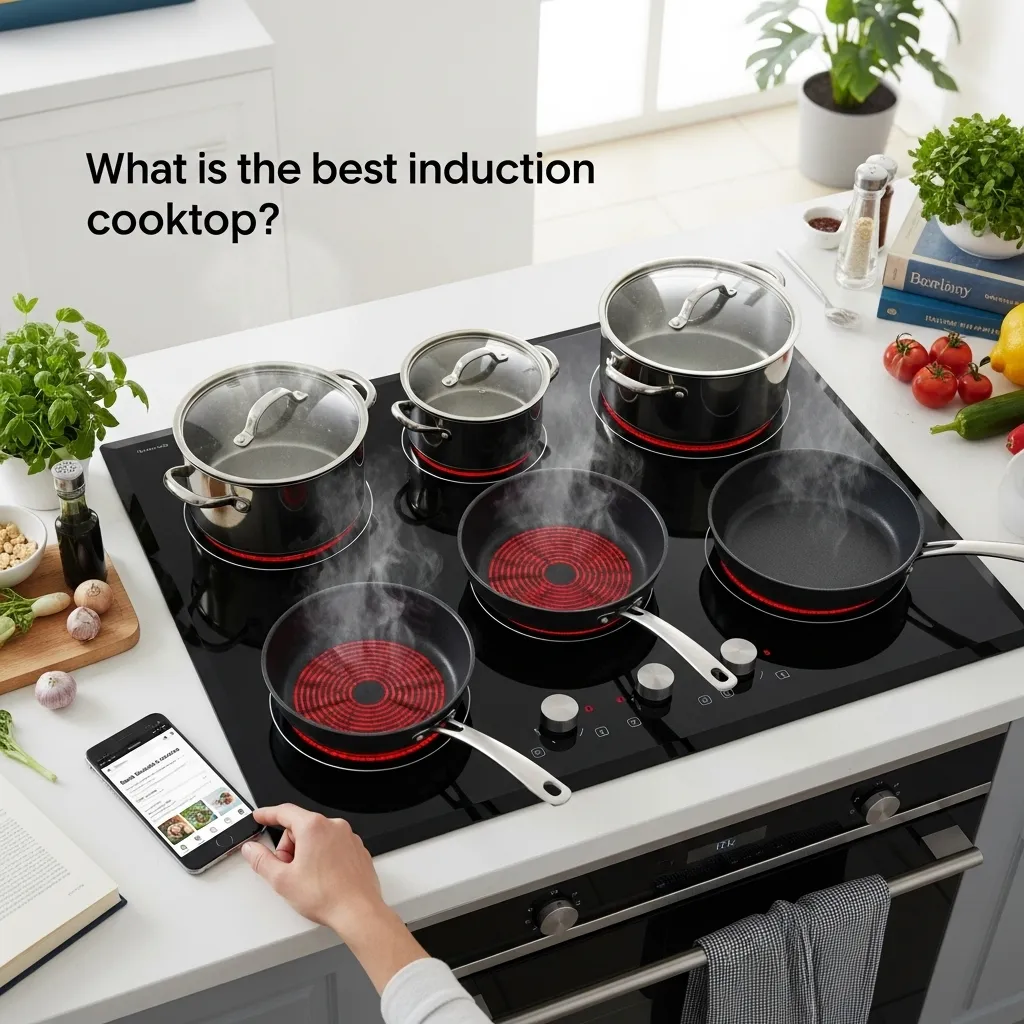The best induction cooktop is the one that perfectly matches your cooking style, kitchen space, and budget, offering a seamless blend of power, precision, and safety. After years of testing and using them in my own kitchen, I can tell you it’s less about a single “best” model and more about finding your ideal match.
Finding Your Perfect Kitchen Partner: A Guide to Induction Cooktops
I remember the first time I cooked on an induction cooktop. I was at a friend’s house, and I watched a pot of water go from cold to a rolling boil in what felt like seconds. I was stunned. As someone who loves to cook but also values a cool, safe, and efficient kitchen, I was instantly hooked. That experience started a journey that led me to replace my old electric coil stove with an induction range, and honestly, it’s one of the best kitchen decisions I’ve ever made.
But I also know that choosing the right one can feel overwhelming. With so many brands, features, and price points, how do you decide? That’s why I’ve put together this guide. I want to share what I’ve learned from my own experience and research to help you find the best induction cooktop for your home.
Why Choose Induction? The Sizzling Benefits
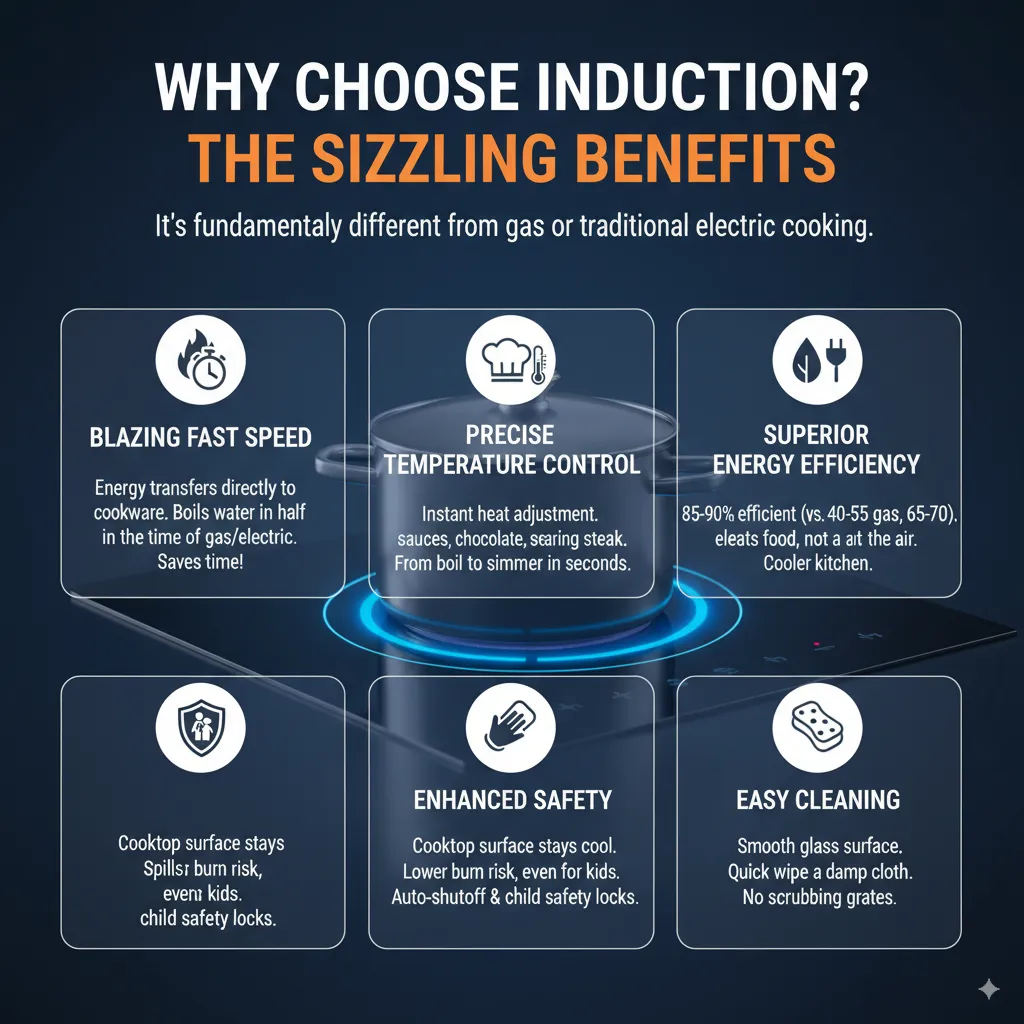
Before we look at specific models, let’s talk about why induction is such a fantastic way to cook. It’s fundamentally different from gas or traditional electric cooking.
- Blazing Fast Speed: This is the headline feature. Induction cooktops transfer energy directly to your cookware, bypassing the heating element altogether. This makes them incredibly fast. Boiling water happens in nearly half the time it takes on a gas or electric stove. It’s a real time-saver on busy weeknights.
- Precise Temperature Control: If you love sauces, delicate chocolates, or searing a perfect steak, the control is incredible. The instant adjustment of heat levels gives you a level of command that rivals, and many chefs argue surpasses, gas. You can drop from a boil to a simmer in seconds.
- Superior Energy Efficiency: This is a big one for me. Because the heat is generated in the pan itself, almost no energy is wasted. Induction is about 85-90% efficient, compared to about 40-55% for gas and 65-70% for standard electric. You’re not heating the air around the pan; you’re just heating your food, which is also better for your kitchen’s climate in the summer.
- Enhanced Safety: Since the cooktop itself doesn’t get hot (only the pot does), the risk of accidentally burning yourself is much lower. I can’t tell you how peaceful it is to have little ones around and not worry about them touching the stove. Many models also have auto-shutoff features and child safety locks.
- Easy Cleaning: The smooth, glass surface is a dream to wipe down. Because spills don’t get baked onto a hot burner, a quick swipe with a damp cloth is usually all it takes. No more scrubbing grates or coil drip pans.
Key Features to Consider on Your Quest
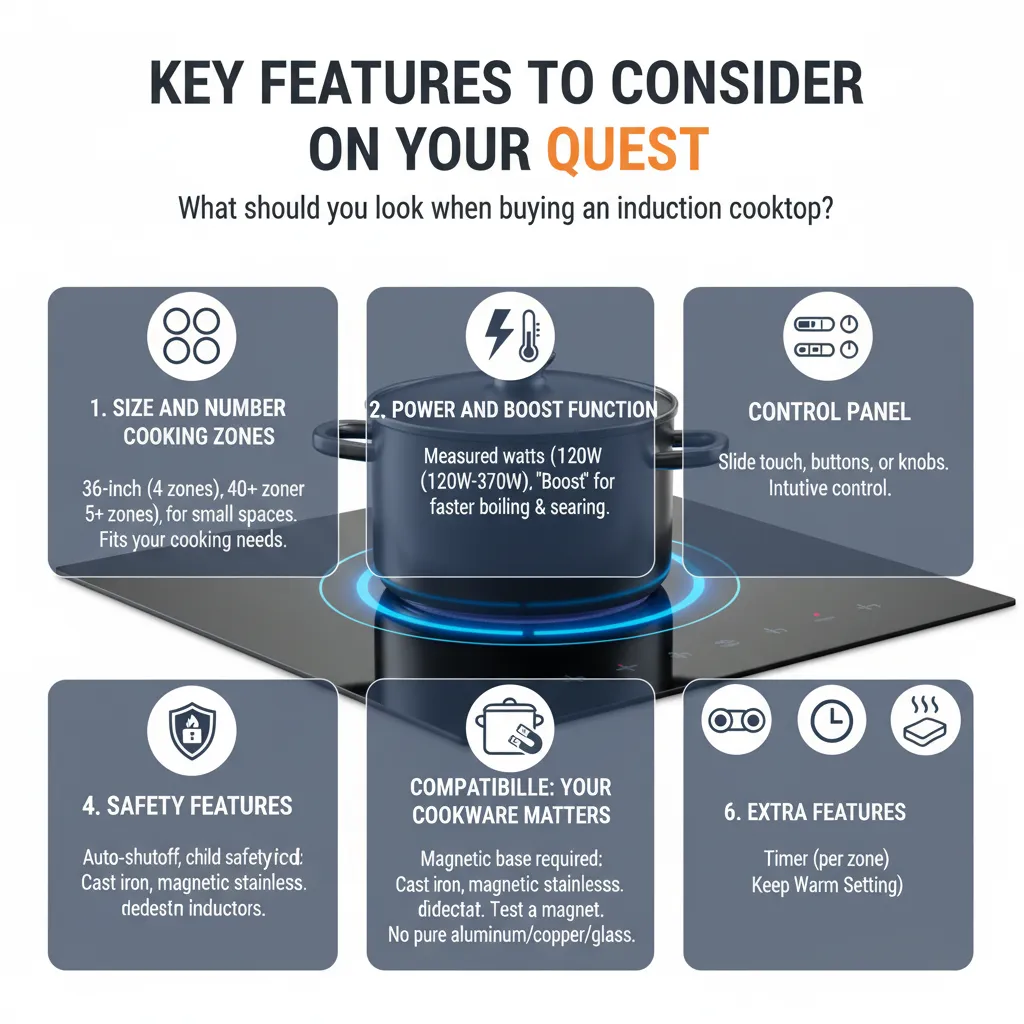
So, what should you look for when you’re ready to buy? Here are the main things I tell my friends and family to consider.
1. Size and Number of Cooking Zones:
Think about how you cook. Do you often have multiple pots going at once? A 36-inch cooktop typically offers four cooking zones, which is perfect for most families. If you’re a serious entertainer or have a large household, you might want a larger 40-inch model with five or more elements. For smaller spaces or couples, a sleek two-burner cooktop could be ideal.
2. Power and Boost Function:
Power is measured in watts. Higher wattage means faster heating. Most good cooktops have elements ranging from 1,200W to 3,700W. A powerful element (often with a “Boost” function that temporarily maxes out the power) is essential for tasks like boiling large pots of water or searing. I use my Boost function almost daily.
3. Control Panel:
You’ll find slide touch controls, individual touch buttons, and rotary knobs. I have a touch slider and sometimes wish for a physical knob for easier adjustment with wet or greasy fingers. Some high-end models offer responsive knobs that are a great hybrid solution. Think about what feels most intuitive for you.
4. Safety Features:
Look for automatic shut-off (it turns off if it doesn’t detect a pan or after a certain time), child safety locks, and pan detection. Some models even have residual heat indicators that show you which areas are still warm from recent use.
5. Compatibility: Your Cookware Matters
This is the most common question I get: “Will my pots and pans work?” Induction requires cookware with a magnetic base. Cast iron and most stainless steel pots will work perfectly. To check if your existing set is compatible, just see if a magnet sticks firmly to the bottom. If it does, you’re good to go! Pure aluminum, copper, or glass cookware won’t work unless they have an induction-ready base layer.
“Induction cooking is the future. It offers the instant control of gas with the easy cleanup of electric, all while being incredibly efficient.” – Sarah S., Professional Chef
6. Extra Features:
- Bridge Function: This allows you to combine two elements to heat a long griddle or a large roasting pan. Fantastic for pancakes or a big fish.
- Timer: You can set individual timers for each cooking zone, which is great for pasta or rice.
- Keep Warm Setting: A low, consistent heat for keeping food ready until everyone is at the table.
Types of Induction Cooktops
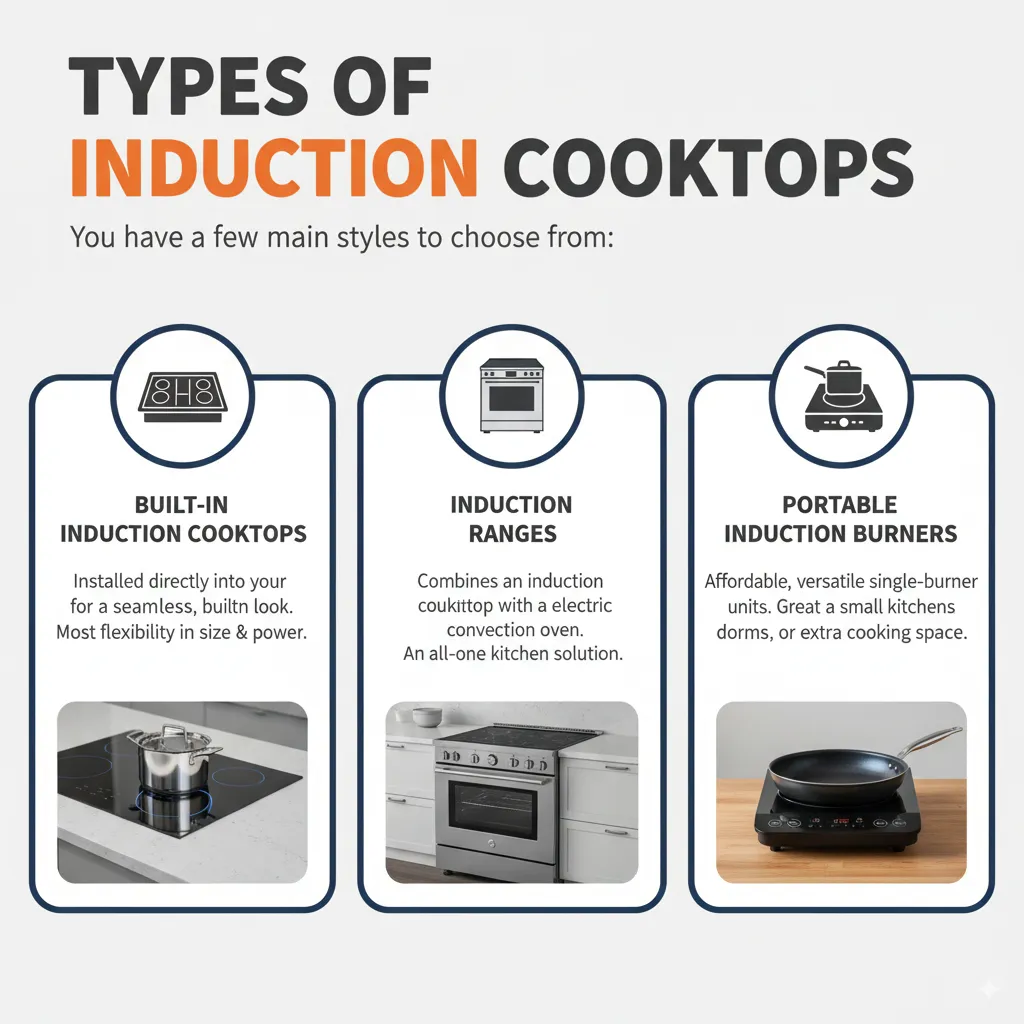
You have a few main styles to choose from:
- Built-In Induction Cooktops: These are installed directly into your countertop for a seamless, built-in look. They offer the most flexibility in terms of size and power. This is what I have.
- Induction Ranges: These combine an induction cooktop with an electric convection oven in one unit. It’s a great all-in-one solution if you’re also replacing your oven.
- Portable Induction Burners: These single-burner units are affordable, incredibly versatile, and perfect for small kitchens, dorm rooms, or as an extra burner for holiday cooking. They’re a great way to try out induction without a big commitment.
Top Contenders for the “Best” Title
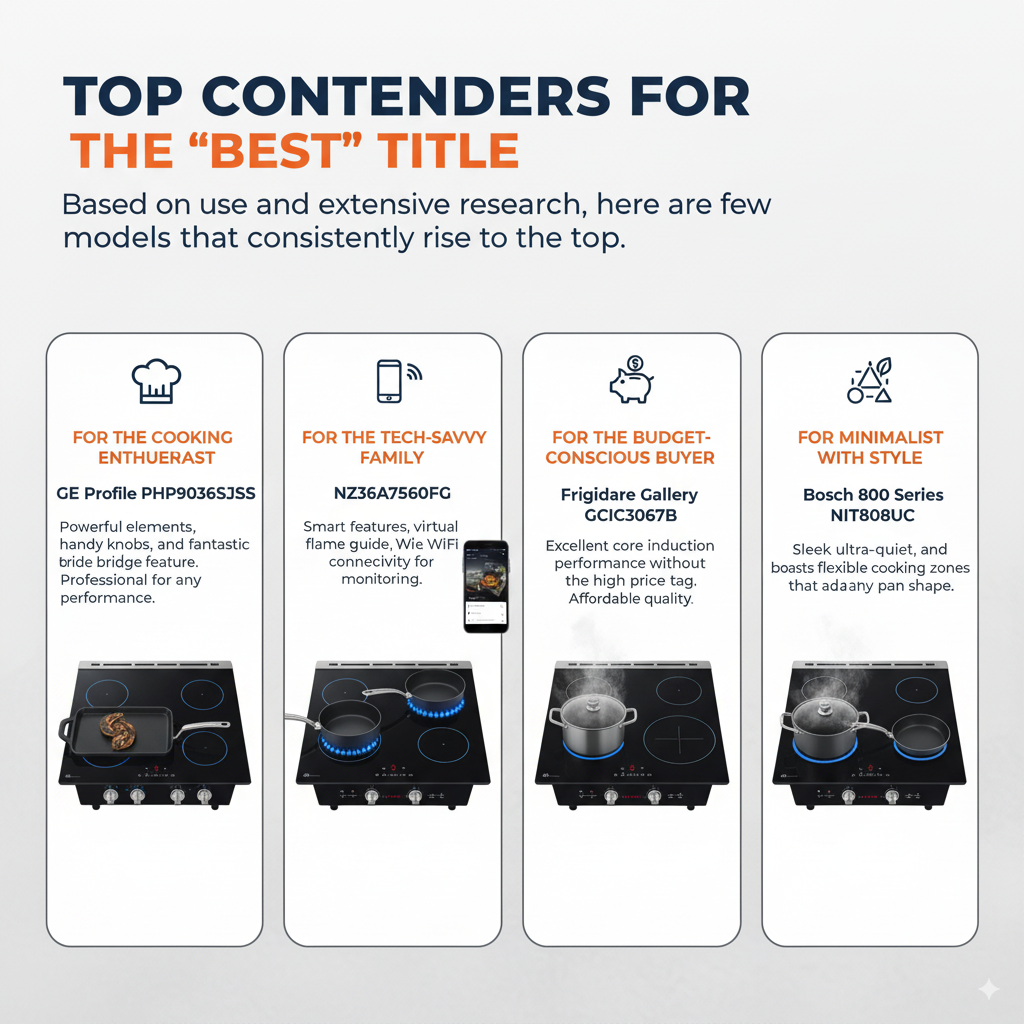
Based on my use and extensive research, here are a few models that consistently rise to the top. Remember, “best” is personal!
- For the Cooking Enthusiast: The GE Profile PHP9036SJSS is a powerhouse. With its powerful elements, handy knobs, and fantastic bridge feature, it’s built for serious cooks who want professional-level performance at home.
- For the Tech-Savvy Family: The Samsung NZ36A7560FG is packed with smart features, including a virtual flame guide for those who miss the visual cues of gas and Wi-Fi connectivity for monitoring your cooktop from your phone.
- For the Budget-Conscious Buyer: The Frigidaire Gallery GCIC3067B offers excellent core induction performance without the high price tag. It proves you don’t have to spend a fortune to get into the induction game.
- For the Minimalist with Style: The Bosch 800 Series NIT8068UC is sleek, ultra-quiet (it has a built-in cooling system), and boasts flexible cooking zones that can adapt to any pan shape.
“Switching to induction was about safety and precision for me. I never realized how much I’d appreciate the easy cleanup until I had it.” – Mark T., Home Cook and Father
Frequently Asked Questions
Are induction cooktops expensive to run?
No, they are actually the most efficient type of cooktop. You’ll use less energy to heat your food, which can lead to lower electricity bills over time.
Do they make a noise?
You might hear a faint hum or a buzzing sound, especially on high power settings. This is normal—it’s the sound of the magnetic field interacting with the cookware. A quiet fan for cooling the electronics may also run. It’s rarely disruptive.
Can I use my cast iron skillet on an induction cooktop?
Absolutely! Cast iron is a champion on induction because it’s highly magnetic. Just be gentle when placing it down to avoid scratching the glass surface.
Will a induction cooktop scratch easily?
The surface is made of durable glass-ceramic, but it can be scratched by abrasive cleaners or dragging pots across it. Using cookware with smooth bottoms and cleaning with recommended products will keep it looking new.
Do I need to hire an electrician to install one?
Most built-in models require a dedicated 240-volt circuit, similar to a standard electric range. It’s highly recommended to use a qualified electrician for a safe and correct installation.
My Final Thoughts and Recommendation
Choosing the best induction cooktop is a personal decision. It’s about finding the right balance of power, features, and design that fits your life.
Start by assessing your needs. How many people do you cook for? What’s your budget? Do you need a built-in model or a range? Make sure your cookware is compatible, or factor a new set into your budget.
For me, the move to induction was transformative. The speed, control, and safety have genuinely made cooking more enjoyable. My kitchen stays cooler, my cleanup is faster, and I can sear a steak or melt chocolate with a level of precision I never had before.
“The efficiency of induction is unmatched. It’s the clear choice for anyone building a new kitchen or looking to upgrade their old appliance.” – David W., Kitchen Designer
If you’re considering making the switch, I wholeheartedly encourage it. Whether you start with a single portable burner or go all-in with a full range, I think you’ll be delighted with the performance and how it changes your experience in the kitchen. Happy cooking

